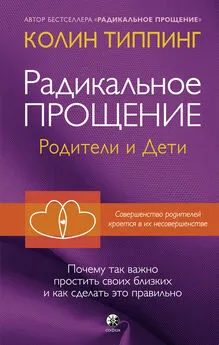Гелена Ариньш - Бойкот раку. Защитите себя и своих близких! Советы врача-онколога из Великобритании
- Название:Бойкот раку. Защитите себя и своих близких! Советы врача-онколога из Великобритании
- Автор:
- Жанр:
- Издательство:Издательство АСТ
- Год:2016
- Город:Москва
- ISBN:978-5-17-094058-5
- Рейтинг:
- Избранное:Добавить в избранное
-
Отзывы:
-
Ваша оценка:
Гелена Ариньш - Бойкот раку. Защитите себя и своих близких! Советы врача-онколога из Великобритании краткое содержание
В этой книге вы найдете все необходимые факты о том, как значительно снизить риск развития злокачественного процесса. Ежедневные мелочи, на которые мы порой не обращаем внимания, существенно влияют на наше здоровье. Ваша осведомленность может спасти жизнь вам и вашим близким!
В книге также приведена информация о профилактическом осмотре и методах ранней диагностики для выявления заболевания на ранней стадии, когда полное излечение вполне вероятно.
Бойкот раку. Защитите себя и своих близких! Советы врача-онколога из Великобритании - читать онлайн бесплатно полную версию (весь текст целиком)
Интервал:
Закладка:
30. Longnecker M. Alcoholic beverages consumption in relation to risk of breast cancer: meta-analysis and review. Cancer Causes and Control 1994; 5: 73–82.
31. Poschl G, Seitz HK. Alcohol and cancer. Alcohol&Alcoholism 2004, Vol 39, N3, pp 155–156.
32. Maier H, Born I A, Veith S, Adler D, Seitz HK. The effect of chronic ethanol consumption on salivary gland morphology and function in the rat. Alcoholism: Clinical and Experimental Research 1986; 10: 425–427.
33. Salaspuro MP . Acetaldehyde, microbes, and cancer of the digestive tract. Critical Reviews in Clinical Laboratory Science 2003; 40: 183–208.
34. Seitz HK, Matsuzaki S, Yokoyama A, Homann N, Vakevainen S, Wang X. A. Alcohol and cancer. Alcoholism Clinical and Experimental Research 2001; 25: 137–143.
35. Seitz HK, Oneta CM. Gastrointestinal alcohol dehydrogenases. Nutritional Review 1998; 56: 52–60.
36. Simanowski U, Suter P, Russel R, Heller M, Waldherr R, Ward R, Peters T, Smith D, Seitz H. Enhancement of ethanol induced rectal mucosal hyperregeneration with age in F244 rats. Gut 1994; 35: 1102–1106.
37. Espina N, Lima V, Lieber C, Garro A . In vitro and in vivo inhibitory effect of ethanol and acetaldehyde on O6-methylguanine transferase. Carcinogenesis 1988; 9: 761–766.
38. Homann N, Jousimies-Somer H, Jokelainen K, Heine R, Salaspuro M. High acetaldehyde levels in saliva after ethanol consumption: methodological aspects and pathogenetic implications. Carcinogenesis 1997; 18: 1739–1743.
39. Jokelainen K, Heikkonen E, Roine R, Lehtonen H, Salaspuro M . Increased acetaldehyde production by mouthwashings from patients with oral cavity, laryngeal or pharyngeal cancer . Alcoholism: Clinical and Experimental Research 1996; 20: 1206–1210.
40. Homann N, Tillonen J, Meurman J, Rintamaki H, Lindqvist C, Rautio M, Jousimies-Somer H, Salaspuro M. Increased salivary acetaldehyde levels in heavy drinkers and smokers: a microbiological approach to oral cavity cancer. Carcinogenesis 2000; 21: 663–668.
41. Deschner E, Long F, Hakissian M, Cupo S . Differential susceptibility of inbread mouse trains forecast by acute colonic proliferative response to methylazoxymethanol . Journal of the National Cancer Institute 1984; 72: 195–198.
42. Lipkin M. Method for binary classification and risk assessment of individuals with familial polyposis based on 3H-TdR labeling og epithelial cells in colonic crypts. Cell Tissue Kinetics 1984; 17: 209–222.
43. Oneta C, Lieber C, Li J, Ruttimann S, Schmid B, Lattmann J, Rosman A, Seitz H. Dynamics of cytochrome P4502E1 activity in man: induction by ethanol and disappearance during withdrawal phase. Journal of Hepatology 2002, 36: 47–52.
44. Leo M, Lieber C. Alcohol, vitamin A, and beta-carotene: advese interactions, including hepatotoxicity and carcinogenicity. American Journal of Clinical Nutrition 1999, 69: 1071–85.
45. Seitz H. Alcohol and retinoid metabolism. Gut 2000; 47: 748–750.
46. Chung J, Liu C, Smith D, Seitz H, Russel R, Wang X . Restoration of retinoic acid concentration suppresses ethanol induced c-jun overexpression and hepatocyte hyperproliferation in rat liver. Carconogenesis 2001; 22: 1213–1219.
47. Cook R. Alcohol abuse, alcoholism, and damage to the immune system – a review. Alcoholism: Clinical and Experimental Research 1998; 22: 1927–42.
48. Roselle G, Mendenhall C, Grossmann C. Effects of alcohol on immunity and cancer . In Alcohol, Immunity and Cancer 1993, Yirmia R and Taylor A, eds, pp. 3–22. CRC Press, Boca Raton.
49. Gallucci R, Pfister I, Meadows G. Effects of ethanol consumption on enriched natural killer cells from C57B/6 mice. Alcoholism: Clinical and Experimental Research 1994; 18: 625–631.
50. Wu W, Wolcott R, Pruett S. Ethanol dicreases the number and activity of splenic natural killer cells in a mouse model for binge drinking. Journal of Pharmacology and Experimental Therapeutics 1994; 271: 722–729.
51. Laso F, Madruga J, Giron J, Lopez A, Cindad J, San Miguel J, Alvarez-Mon M, Orfao A. Decreased natural killer cytotoxic activity in chronic alcoholism is assossiated with alcoholic liver disease but not active ethanol consumption. Hepatology 1997; 25: 1096–1100.
52. IARC 2012. Personal habits and indoor combustions.IARC Monogr Eval Carcinog Risks Hum, 100E: 1–575.
53. Lubin J, Purdue M, Keley K, et al. Total exposure and exposure rate effects for alcohol and smoking and risk of head and neck cancer: a pooled analysis of case-control studies. Am J Epidemiol 2009; 170: 937–947.
54. Lachenmeier D, Przybylski M, Rehm J (2012). Comparative risk assessment of carcinogens in alcoholic beverages using the margin of exposure approach. Int J Cancer 2012; 131: E995–E1003.
55. IARC (2010). Alcohol consumption and ethyl carbamate. IARC Monogr Eval Carcinog Risks Hum 2010; 96: 1–1428.
56. Singletary K, Gapstur S. Alcohol and breast cancer: review of epidemiologic and experimental evidence and potential mechanisms. JAMA 2001; 286: 2143–2151.
57. Pericleous M, Rossi RE, Mandair D, Whyand T, Caplin ME. Nutrition and pancreatic cancer. Anticancer Res. 2014 Jan; 34(1): 9–21.
58. Lowenfels AB, Maisonneuve P, Cavallini G, Ammann RW, Lankisch PG, Andersen JR, Dimagno EP, Andrén-Sandberg A, Domellöf L. Pancreatitis and the risk of pancreatic cancer. International Pancreatitis Study Group . N Engl J Med . 1993; 328: 1433–1437.
59. Genkinger JM, Spiegelman D, Anderson KE, Bergkvist L, Bernstein L, van den Brandt PA, English DR, Freudenheim JL, Fuchs CS, Giles GG, et al. Alcohol intake and pancreatic cancer risk: a pooled analysis of fourteen cohort studies . Cancer Epidemiol Biomarkers Prev . 2009; 18: 765–776.
60. Lucenteforte E, La Vecchia C, Silverman D, Petersen GM, Bracci PM, Ji BT, Bosetti C, Li D, Gallinger S, Miller AB, et al. Alcohol consumption and pancreatic cancer: a pooled analysis in the International Pancreatic Cancer Case-Control Consortium(PanC4) Ann Oncol. 2012; 23: 374–382.
61. Tramacere I, Scotti L, Jenab M, Bagnardi V, Bellocco R, Rota M, Corrao G, Bravi F, Boffetta P, La Vecchia C . Alcohol drinking and pancreatic cancer risk: a meta-analysis of the dose-risk relation. Int J Cancer. 2010; 126: 1474–1486.
62. Gupta S, Wang F, Holly EA, Bracci PM . Risk of pancreatic cancer by alcohol dose, duration, and pattern of consumption, including binge drinking: a population-based study. Cancer Causes Control . 2010; 21: 1047–1059.
63. Falk RT, Maas P, Schairer C, Chatterjee N, Mabie JE, Cunningham C, Buys SS, Isaacs C, Ziegler RG. Alcohol and risk of breast cancer in postmenopausal women: an analysis of etiological heterogeneity by multiple tumor characteristics. Am J Epidemiol. 2014 Oct 1; 180(7): 705–17.
64. Rizos Ch, Papassava M, Golias Ch, Charalabopoulos K. Alcohol consumption and prostate cancer: a mini review. Exp Oncol. 2010 Jul; 32(2): 66–70.
65. Sawada N, Inoue M, Iwasaki M, Sasazuki S, Yamaji T, Shimazu T, Tsugane S. Alcohol and smoking and subsequent risk of prostate cancer in Japanese men: the Japan Public Health Center-based prospective study. Int J Cancer. 2014 Feb 15; 134(4): 971–8.
66. Li Y, Mao Y, Zhang Y, Cai S, Chen G, Guo J, Chen K, Jin M. Alcohol drinking and upper aerodigestive tract cancer mortality: a systematic review and meta-analyssis. Oral Oncol 2014; 50 (4): 269–75.
67. Huang Q, Luo K, Yang H, Wen J, Zhang S, Li J, Ela Bella A, Liu Q, Zheng Y, Hu R, Chen J, Fu J. Impact of alcohol consumption on survival in patients with esophageal carcinoma: a large cohort with long-term follow-up. Cancer Sci 2014 Oct 7. Doi: 10.1111/cas.12552.(Epub ahead of print).
68. Zhu J, Wang Y, Zhou Q, Zhu K, Yu C, Li Y. Systematic review with meta-analysis: alcohol consumption and the risk of colorectal adenoma. Aliment Pharmacol Ther 2014; 40(4): 325–37.69/ Denise HE Maasland, Piet A van den Brandt, Berndt Kremer, R Alexandra Goldbohm and Leo J Shouten. Alcohol consumption, cigarette smoking and the risk of subtypes of head-neck cancer: results from the Netherlands cohort study. BMC Cancer 2014; 14: 187.
Глава 7. Инфекции и рак
Давно известно, что вирусы, бактерии и паразиты могут быть причиной некоторых типов рака. Например, по статистике 2008 года, 16 % всех зарегистрированных раковых болезней возникли в результате инфекций. Число случаев возникновения злокачественной опухоли по вине инфекции широко варьирует в зависимости от региона. Самый высокий показатель – 33 % – зарегистрирован в суб-тропической Африке, самый низкий – 4 % – в Австралии, Северной Америке и Новой Зеландии (1).
Осведомленность об инфекциях, вызывающих развитие рака, поможет каждому человеку усилить уровень бдительности, чтобы, во-первых, не заболеть; и, во-вторых, пройти курс лечения, снижая риск роста раковой опухоли.
1. Helicobacter pylori
H. pylori – это бактерия, которая, как оказалось, является причиной некоторых доброкачественных и злокачественных процессов в пищеварительном тракте (2).
Впервые бактерия была обнаружена в 1982 году в желудке, хотя она также может колонизировать ткани глаза. Большинство людей инфицированы данной бактерией, даже не подозревая об этом. В 80 % случаев инфекция протекает без симптомов. Однако современным медикам известно, что H. pylori может являться причиной развития язвы желудка и 12-перстной кишки, а также – гастрита и рака.
Острая инфекция иногда вызывает тошноту, рвоту и/или боли в желудке. Затем инфекция переходит в хроническую форму, которая, как правило, не сопровождается никакими проявлениями. Некоторые люди испытвают симптомы диспепсии: дискомфорт и боль в желудке, тошноту, «вздутие» живота, иногда рвоту.
Читать дальшеИнтервал:
Закладка:










